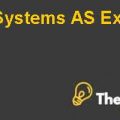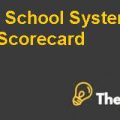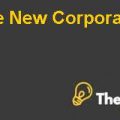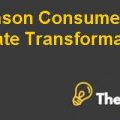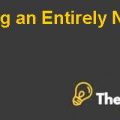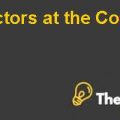
POSTING # 1:
Performance management can be defined as a continuous process of assessing, evaluating and measuring performance of an individual and aligning it with the organizational goal and objectives. There is a linkage between performance management and reward system in order to maximize the business performance. The reward system is made for employee’s retention and commitment to work (M Armstrong, 2000).
According to Steven Kerr, on the Folly of rewarding ‘A’, while hoping for ‘B’, many problems and conflicts arise in the organization because of fault incentives and flawed reward system that are set up to achieve one thing but actually motivating people to do another, or even opposite. Kerr’s first method helps the managers to seek qualifies and measure everything at the organization by using 6 six sigma approach. This approach will help the organization to prioritize by reducing rates through rigorous statistical analysis and process control. However, there are some benefits in this approach, which help the employees to boost incentives by their performance evaluation. The company should propose a strategy to overcome this cause and apply it effectively to reward employees (Y Çabuk, 2010).
In the second method, inclination is on rewarding employees that are highly visible and ignoring other activities that are not easily to reward such as innovation and team building. However, the company should reward innovation and team building in order to encourage employees to boost their performance and bring profitable outcome in the future. The human resource manager should consider the performance management tools to segment employees and identify talent to promote collaboration and build positive relationship.
The third method is the one in which the one who gives the reward is satisfied with the reward system because his criteria is met, but the desired behavior is not. However, the human resource manager designs the rewards system, in which individual level rewards are compatible with group level. By doing this, the management can remove the hypocrisy in the organization. In the fourth method, the system is rewarding behavior desired by rewarder, which leads the reward system fouled-up (Kerr, 1975).
POSTING # 2:
I agree with the information provided by the classmate, but some information is lacking such as, in the first method, the company can measure the performance of the employees by using decision making criteria. Further, the managers can measure activities that are not quantifiable, by using job evaluation method. This method will help the HR managers to make substantial improvement in the reward system and encourage employees to work effectively.
The innovation and team building play a vital role to increase the profits of the organization. Therefore, it would be unfair for the employees, if the reward only focuses on highly visible employees. I disagree with the classmate that only first and second cause should be considered. In my opinion, the management should adopt first, second and third causes effectively, in order to bring improvements and modifications. The company can reduce hypocrisy by rewarding the individual level compatible to group level; this approach will increase the employee’s performance (Dyer, 2007).
The mangers need to pay more attention on what types of behavior are being rewarded and consider to altering the reward or payoff system in order to increase the ratio of desired and undesired outcomes. The managers should also motivate and encourage employees by providing an effective reward system. Furthermore, the high involvement managers should develop skills in employees, reinforce good performance, and provide response and feedback, and follow-up on unacceptable performance (Armstrong, 1993).
Moreover, the manager should also develop a possible remedies to overcome the causes such as, select the individual that are constant with the organizational goals, training to alter those personal goals, and altering the reward system. The human resource manager needs to understand the principle involved in practicing successful reinforcement behavior and how to implement reward effectively.
REFERENCES
Armstrong, M. (1993). Managing reward systems. Open university.
Dyer, W. (2007). Team building. Wiley Online Library.
Kerr, S. (1975). On the folly of rewarding A, while hoping for B. Academy of Management journal.
M Armstrong, A. B. ( 2000). Performance management. Human resource management.
Y Çabuk, S. K. (2010). Six sigma approach.........................
This is just a sample partial case solution. Please place the order on the website to order your own originally done case solution.

